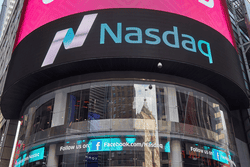SPACs, created in the US in the 1990s to help financial sponsors raise funds more quickly in capital markets, had suffered, until recently, from a weak IPO market and several failed acquisitions.
Following a slow decade, Special Purpose Acquisition Companies, or SPACs, have returned to global financial markets, hitting an all-time high. As of September 2017, according to Dealogic, SPACs grew 250%, raising $9.1 billion via 53 IPOs, compared with the same period a year ago, when $2.6 billion was raised in 16 deals.
SPACs, which were created in the US in the 1990s to help financial sponsors raise funds more quickly in capital markets, had suffered, until recently, from a weak IPO market and several failed acquisitions.

Executives and financial sponsors have used SPACs, or “blank check” structures, to raise money without existing assets to acquire a company in 18-to-24 months within a special regulatory framework.
Several factors have strengthened the SPAC market in 2017, including strong capital markets performance and global policy efforts that make it easier for companies to go public.
Recent transactions show that SPACs have become a major tool for financing acquisitions in a market with high valuations across all asset classes.
Chamath Palihapitiya, founder and managing partner of Social Capital, a venture capital firm in Palo Alto, recently founded SPAC Social Capital Hedosophia Holdings, which raised $600 million on Sept. 14 with the aim of acquiring one or more private start-ups with high valuations, also known as tech unicorns.
Palihapitiya and his colleagues perceive the blank-check process as more attractive for entrepreneurs and investors who want to avoid the strict regulatory requirements of an IPO. The target company’s employees can sell their shares more easily, and investors buy units or warrants that are traded separately and can be sold following the acquisition.
The Nasdaq in the US plays a central role in SPACs. “Since 2011, the Nasdaq has consistently been the exchange of choice for SPACs, attracting 96% of all SPAC IPOs listing on a national exchange,” says Michael Bartels, Nasdaq’s vice president of listings service strategy.
The energy sector has been very active in this space as well. In March, the blank-check company Silver Run Acquisition raised $1 billion, one of the largest SPACs on record, to build a mid- and upstream energy portfolio. The publicly traded SPAC, Harmony Merger, acquired NextDecade, a Texan private natural-gas developer, in April. Fourteen of the SPAC deals so far in 2017 have come from the Europe Middle East Africa region, with a total value of $1.1 billion.



